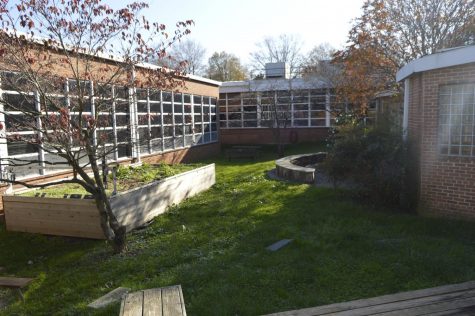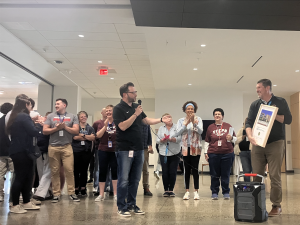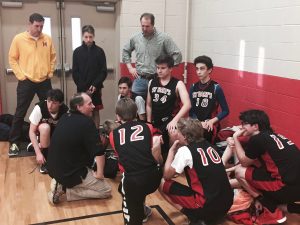Opinion: We should wait to return to in-person school
November 21, 2020

Constantly bombarded with the phrase “These are unprecedented times,” it begins to lose its meaning. But with thousands of lives lost and most people not returning to work or school, this remains a brand new situation for all of us.
Everyone is itching to get back to normal, but nobody has a fully fleshed out plan for how we can do that; there are so many questions left unanswered. For the health and safety of students, teachers, our families, and a myriad of other reasons, we should wait until we have a clearly articulated, meticulous plan, as well as overwhelmingly safe COVID metrics, before we go back to school.
First and foremost, students and staff with pre-existing conditions or who are more at risk would likely have to stay home even if most of the school were to come back. In addition, students living with their grandparents or other susceptible populations at higher risk for serious life-threatening consequences of contracting the virus. Students should not be put in the position of having to choose between a quality education and their health as well as the safety of those close to them. On top of this, the long term effects of the virus are largely unknown. Although more research must be done, there have been some implications of serious long term effects, such as permanent organ damage.
Our federal leadership through the pandemic has been, at best, sub-par, and oftentimes contradictory to suggestions from the CDC. They encourage returning to school, arguing that students need to spend time around their peers, but also strictly advising that 6 feet of social distance be maintained when around anyone with whom you do not live. Especially considering how starved of social interaction students are, it is unrealistic to expect these guidelines to be truly maintained. When going out, it is never difficult to find people without masks, so it would be hard to expect students to behave better than many adults.
According to Superintendent Peter Noonan’s COVID-19 Update, Mason is offering ‘All parents [..] the opportunity to select whether their student(s) will attend 100% virtually or attend in a hybrid model,” which would allow those with pre-existing conditions or household members who are vulnerable to protect them, but it also presents problems for teachers.
If the same option were presented to teachers as it is to students, as would be fair, then, when teachers do opt to stay at home, it gives their in-person students the exact same learning experience they would have if they were at home. This could pressure some teachers into going to teach in-person for their students’ sake, which is unfair.
The same dilemma is presented: should people have to choose between their health or that of people close to them and good education? It is also unfair to expect a teacher with both students at home and in person to prepare two different lesson plans for one class, because as much as one may dream that the in-person plan can just translate directly online, after months of online learning, we all know that it is not so simple. This extra workload would likely decrease the quality of education for both groups of students, as well, making a lose-lose-lose situation.
In saying this, I am still a student who is engaging in distance learning, and I know it is far from perfect. There are fair arguments to be made in regard to the mental health effects and the quality of learning, but it simply is overshadowed by the immediate health and safety of all people in schools. We can make virtual schooling work in the long term, we just have to think of it as a long term plan instead of a school substitute until school comes back.
With all of these uncertainties, needs and dangers to balance, and issues of equity and equality, we should not reopen until some more answers can be found. Despite everyone’s desperate wishes for a return to normal, it may be best for the idea of normal to change, and for us to adapt to a new, different way of life.
For more student perspectives on reopening, click here.








